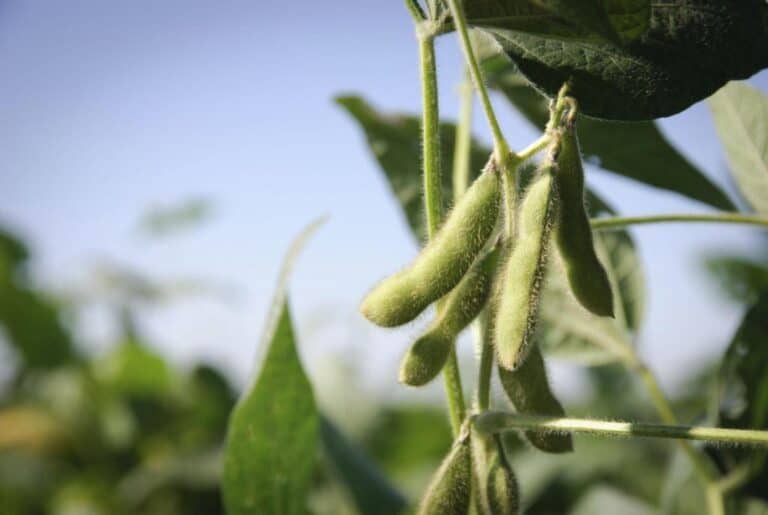Why Is Cutting Down Trees Bad for Life and Environment? (Here’s the Truth)

Forests are home to countless plant and animal species that cannot be found in any other habitat.
Forests are one of the most important natural resources on earth. They provide us with many benefits, including clean air and water; wood for construction and furniture; and homes for wildlife. Forests also help to regulate the climate and are a major source of oxygen in the atmosphere.
Deforestation is one of the most significant problems we face today. Deforestation is one of the leading causes of climate change. Trees are vital to the environment because they remove carbon dioxide from the air while simultaneously adding oxygen.
When trees are cut down, there are fewer trees to absorb carbon dioxide. This results in more carbon dioxide in the atmosphere, which leads to more greenhouse gases and global warming. Deforestation also causes soil erosion, which can lead to water pollution and flooding.
By cutting down trees, we are disrupting these important natural processes and causing serious harm to the environment and to human health.
Why Should We Save Trees?

There are many reasons why we should save trees. One reason is that trees help to combat climate change. They absorb carbon dioxide, which is a greenhouse gas, and produce oxygen. This helps to regulate the Earth’s temperature and climate.
Another reason is that trees improve air quality by trapping particulates and pollutants in their leaves. This filters the air and makes it cleaner for us to breathe.
Lastly, trees are important for our mental health and wellbeing. Being around nature has been shown to reduce stress levels, anxiety, and depression. Trees can also increase our sense of happiness and calmness.
How Are Trees Beneficial to Us, Humans?
It is no secret that trees are essential for the environment and the many creatures that live within it. However, what is often overlooked are the benefits of trees to humans.
In an ever-growing world, it is important that we save trees. Trees provide many social and communal benefits that often go unnoticed.
Here are some of the benefits of trees to humans:
Social Benefits
Trees provide a number of social benefits. They can help to reduce noise and pollution levels, provide shade and shelter, and create an overall more pleasant environment.
Additionally, trees have the ability to raise property values. Studies have shown that properties located near trees have higher resale values than those without trees.
Trees can also help to create a sense of community. They can be used as gathering places for people to meet and socialize. Trees can also help to improve mental health by reducing stress levels and providing a sense of calm.
People often plant trees as living memorials or as reminders of loved ones or important events in their lives.
Communal Benefits
Communities benefit from trees in many ways. Trees can help to clean the air we breathe, cool the streets and homes, reduce noise pollution, create jobs, and increase tourism. Trees also help fight climate change by taking in carbon dioxide.
Trees provide innumerable benefits to both individuals and communities. By taking advantage of these benefits, we can create a healthier, more sustainable world for ourselves and future generations.
Economic Benefits
In an era of increasing income inequality and environmental degradation, the benefits of trees are more important than ever. Trees provide numerous benefits for both people and the planet—from improving air quality to providing economic opportunities.
The economic benefits of trees are often overlooked, but they are significant. Trees can help to boost local economies by attracting tourists, generating jobs and supporting small businesses.
For example, in the United States, the forestry industry directly employs over 1 million people and generates $200 billion in annual revenue.
Trees also provide indirect economic benefits by reducing energy costs, improving crop yields and preventing soil erosion. In fact, a recent study found that every dollar spent on tree planting and care can generate up to $30 in economic benefits.
With so many benefits, it’s clear that trees are a valuable asset—both for individuals and for society as a whole.
Why Are Trees Important to the Earth?
There are many benefits trees provide for the earth, but these are just a few of the most important ones. If we want to protect our planet and ensure that it remains healthy for future generations, we need to plant more trees!
Environmental Benefits
Trees minimize stormwater runoff, so reducing erosion and pollution in our rivers and perhaps mitigating the consequences of flooding.
Many animal species rely on trees for habitat. Numerous birds and animals find food, shelter, and safety in trees.
Trees make the air better because they take in carbon dioxide and other pollutants and give off clean oxygen. They also help to combat climate change by moderating the Earth’s temperature – cooling it in summer and warming it in winter.
In addition to their environmental benefits, trees also have a positive impact on our health. Studies have shown that spending time in nature can reduce stress, lower blood pressure, and improve mental well-being.
Trees also provide shade and can help to cool urban areas, which can improve public health by reducing heat-related illnesses and deaths.
Deforestation and Its Impact on the Environment
The elimination of forests via cutting, burning, or other methods is known as deforestation. Deforestation happens for many reasons: trees are cut down to be used or sold as fuel (such as wood for cooking or heating), timber for construction, or cleared to make way for farming, ranching, or mining. It also occurs due to the spread of disease, fire, and insect infestation.
Deforestation has many negative effects on the environment. The most obvious impact is the loss of trees themselves. But deforestation also causes soil erosion, which can lead to flooding and landslides.
It also contributes to climate change by releasing carbon dioxide into the atmosphere. Deforestation negatively impacts plant and animal species by destroying their habitats and reducing biodiversity.
Should We Cut Down Trees to Save The Environment?
In recent years, there has been a growing movement to cut down trees in order to save the environment. The argument is that by removing trees, we can reduce deforestation and the associated environmental problems.
There is some merit to this argument. Deforestation is a major problem globally, and it is responsible for a significant amount of greenhouse gas emissions. Removing trees can help to reduce these emissions.
However, cutting down trees is not always the best solution. In many cases, managed forests can actually be more effective at sequestering carbon dioxide than natural forests. And, of course, trees provide many other benefits to the environment, such as habitat for wildlife and preventing soil erosion.
In addition, forests provide habitat for wildlife and are essential for maintaining biodiversity. They also play a role in water cycle regulation and can help prevent soil erosion.
Forests are renewable resources that can be managed to provide many benefits for the environment. Instead of cutting down trees, we should be working to protect and conserve our forests.
So, while cutting down trees may sometimes be necessary to protect the environment, it is not always the best solution.
Keypoints on Why Is Cutting Down Trees Bad for Life and Environment?
Cutting down trees is bad for life and the environment for many reasons. It leads to deforestation, which destroys ecosystems, causes climate change, and hurts local economies. Not to mention, it’s simply bad for the trees.
We need to be more conscious about our actions and how they affect the planet. We can start by planting trees, supporting companies that practice sustainability, and reducing our paper consumption.







